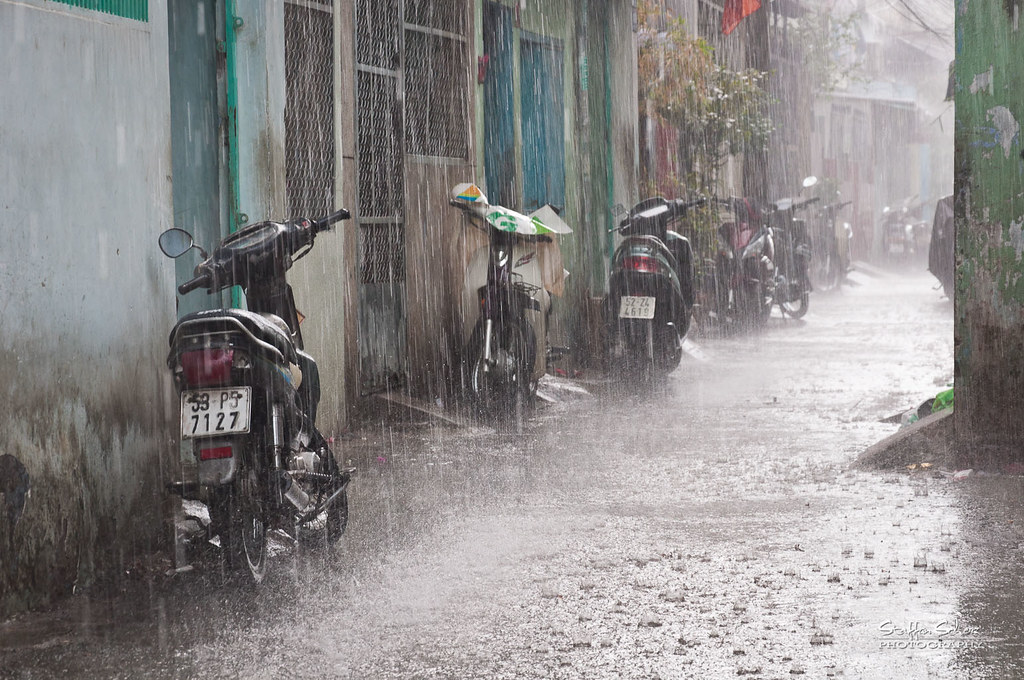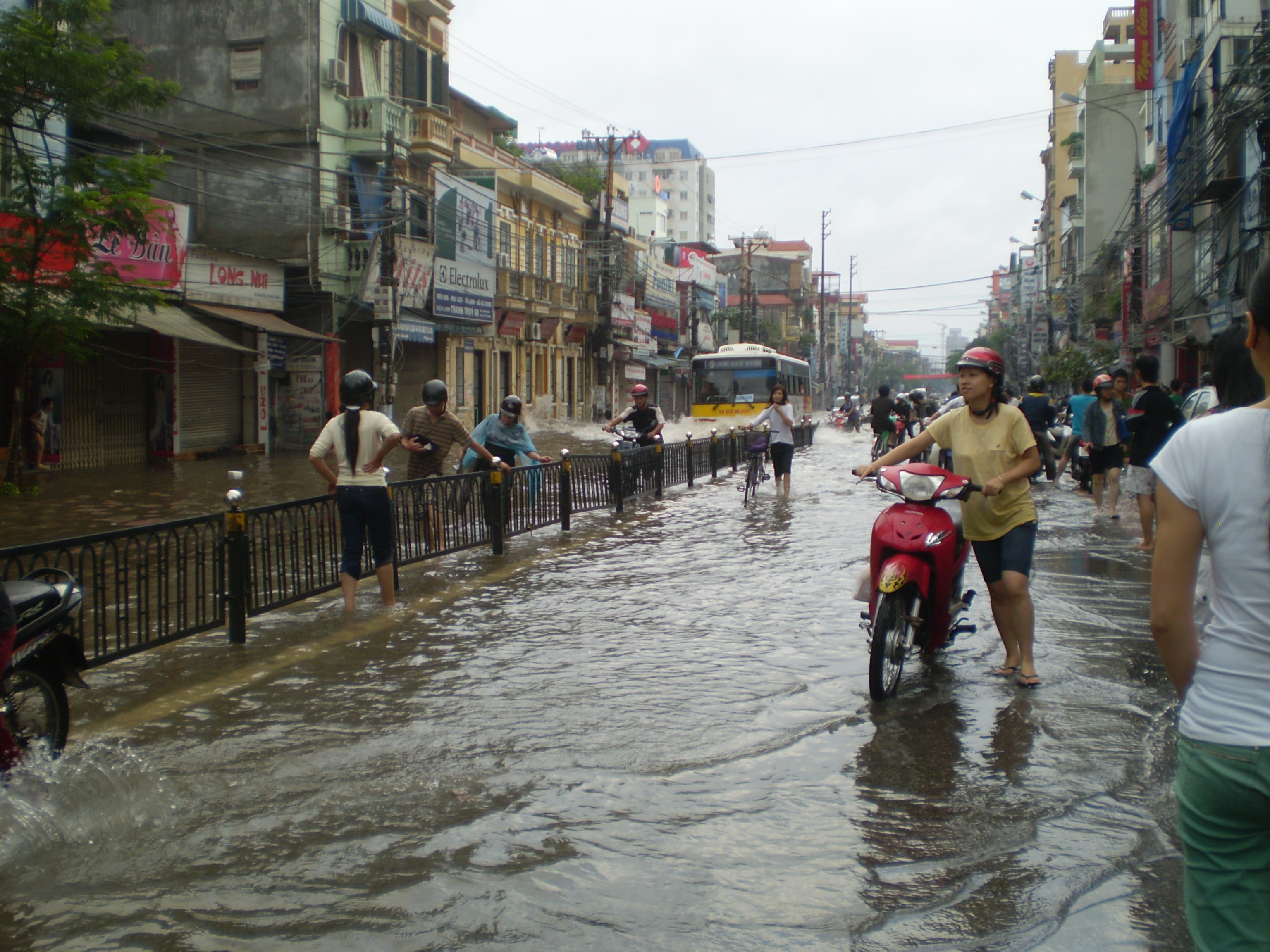Ninja Teacher’s Guide to Rainy Season in Vietnam
Rainy Season in Vietnam can hit you like a wall of water in rush hour. We’ll help you prepare to stay dry so you can Teach English without being deterred by the weather.
By: Brennan Lagman
I arrived in Vietnam’s bustling Ho Chi Minh City in the heart of the rainy season, and boy was I unprepared. Within the first week, I was hit with multiple torrential downpours– literal walls of water that didn’t seem to deter locals from going about business as usual. I remember showing up as a freshmen English teacher to one of my classes with bare feet because my leather dress shoes each contained a full cup of water. Though it was a struggle, I survived…and a year later I was prepared to meet the monsoons head on.
Tropical downpours are probably new to you, but they are a major part of life for half of the year here. As much of a hassle as they can be at times, billions of people live in countries with monsoon seasons. If they can go about their business despite the rain, so can you!
Follow the tips in this guide to ensure you stay on top of your new teaching job without letting the rain get between you and your school, language center, or what have you.

Rainy Season in Vietnam: What to Expect
Vietnam has a Tropical Monsoon climate. The season of rain affects some regions of the country in similar ways: for five to six months out of the year, precipitation can be expected in some form or another pretty much every day, give or take a couple here and there. Floods, thunderstorms, and heavy winds are common in certain areas. However, there are some slight regional differences to take note of when considering where you wish to apply for English teaching positions.
Southern Vietnam
The Southern Region of Vietnam includes major cities like Ho Chi Minh City, Bien Hoa, and Vung Tau. This region of Vietnam is infamous for heat, humidity, and rain– particularly in the months between April and October, with June and August being heavily drenched. Luckily, for the most part, the rain is warm.
If you find employment in Saigon, you can expect intermittent but torrential downpours of rain that last between fifteen minutes to an hour on average. Although it is rare that it rains continuously all day like in some western countries, the sporadic storming makes it difficult to prepare ahead of time– you never know when the storms will hit.
Central Vietnam
The central region is a long and narrow corridor of land that can be further divided into the northern and southern-central regions. Northern includes major cities such as Danang, Hue, Hoi An, and Dong Ha; and in the south, there is Nha Trang, and others. Because the region is shielded along the coastline by the Truong Son Mountain Range, the storms that hit the other regions don’t affect here as much.
On the flip side, between September and December, the Northern-Central region (Hoi An and Danang) receive considerable amounts of cold rain. Unlike Vietnam’s true Northern and Southern regions, this area is more susceptible to typhoons, which is this region of the world are equivalent to Hurricanes.
Northern Vietnam
Vietnam’s Northern region includes the Nation’s Capital of Hanoi, and Halong Bay, Sapa, and Haiphong. This area has a much more varied climate than the others. Winter brings cold air that can get frosty to the far north, especially in December and January.
This time of year is infamous for fog and mist and that can affect your visibility. The hottest months of July and August are also the wettest. The region is hit with storms similar to the southern region, and it is known to flood.

How to Survive Rainy Season in Vietnam: Hope for the best, prepare for the worst.
It’s inevitable that you will get wet a few times while you are here. But, fret not– follow these tips and you’ll be better prepared to weather the storm.
Rainy Season Clothing
Depending on the region and time of year, the temperature can range between hot and cold. In warmer regions, be sure to wear lightweight clothes that can dry easily on your way to work. You will rarely need a jacket thanks to the heat.
Avoid heavy cotton, denim, wool, or knit materials at all costs! Instead, opt for lighter materials like linen, silk or nylon. Just err on the side of caution: synthetic materials can’t breathe, and the heat and humidity can suffocate you.
On top of breathable materials for everyday use, in colder regions be sure to pack lightweight wind and water resistant jackets, especially if you plan to commute via motorbike. Also, water resistant shoes are important, but make sure they are suitable for work.
Rainy Season Accessories
Accessories are essential in the rainy season! The most obvious essential is a poncho, or what locals call ‘raincoat.’ Keep one in your motorbike, and though it won’t completely shield you from getting wet, it will protect most of your body.
In warmer regions, keep a pair of shower shoes or flip flops in your bag. When rain is on the horizon, just toss your shoes and socks into a polybag and throw these on, and no rain can stop you.
Also, always keep a light sweater or jacket in your bag or motorbike storage in case you get wet or cold. I carry these things plus an extra change of socks or an emergency shirt at all times when I am commuting to work during the rainy season.
If you have important equipment like laptops, cameras, or more, be sure to have bags that are water resistant, or at least have some sort of rain cover to protect your precious electronics.
Plan Ahead of Time
I always tell my students that the most prepared student is the most successful. Same goes for teachers! Make sure to research the specific city you plan to teach in to know what the rain is like. As you explore and learn your way around, take note of flood and traffic prone areas and avoid those, especially on your motorbike during traffic times.
In most cases, weather apps are not very helpful because the weather patterns change quite rapidly. a better alternative would be to get rain radar maps that track the precipitation on a live map overlay. This will help you better predict the size and length of oncoming storms and adjust accordingly.
Rainy Season In Vietnam: Hope for the Best but Prepare for the Worst
Rain is an inevitable part of life as an English teacher in Vietnam. Most of the time you will miss the storms, but sometimes you’ll get caught out in the rain! The best plan of action is to always be prepared. Make sure to research the region you plan on staying in, and consider these tips when packing for your new adventure!
